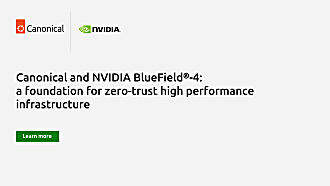Canonical
on 17 August 2015

The Linux Foundation and PLUMgrid are set to open source IO Visor technology
The IO Visor is more than just a new networking technology, it’s a relatively new concept in how we lay the foundation for any new network technology altogether. Networking is rapidly evolving, with new protocols, new topologies and new designs being developed to address different needs of modern infrastructures.
This new technology makes traditional, hardware-based solutions nearly impossible to use. Even newer, SDN-based overlay networks are changing so fast it’s becoming a burden to maintain them. That’s where the IO Visor Project starts to reveal its importance.
With the IO Visor,underlying network functions are fully programmable and hot-swappable. If your application or your infrastructure has a dramatic shift in IO patterns or requirements, that shift can be accommodated with a kernel module update, as opposed to a swap or change of networking solution, including a reboot to the infrastructure itself.
IO Visor’s ability to meet on-demand changes would not be very beneficial if it couldn’t scale, and much like Ubuntu and Ubuntu OpenStack, the IO Visor was designed with scalability in mind. The data plane (the logically defined paths where all your data flows) is horizontally distributed across all of the nodes in your Virtual Fabric Overlay. So, as your workloads scale, your network IO capabilities automatically and organically scale along with them.
And it isn’t just for networking. It was designed for IO, in general. It makes us wonder, what sort of storage solutions could be designed around a kernel-integrated, dynamic, programmable IO plane? What sort of innovation will our networking partners bring to market based on the IO Visor Project?
It’s really exciting to think about the possibilities when we aren’t constrained to choose one or two network technologies at design time and locked into them for the duration of deployment. It makes me think of Juju’s service modeling approach to application and solution deployment. You can design, deploy, redesign and redeploy with the same solution purpose, but completely different components underneath. The IO Visor will always give access to IO and networking (the solution purpose), but the underlying technology could be changed just by choosing a different model and moving to it.



